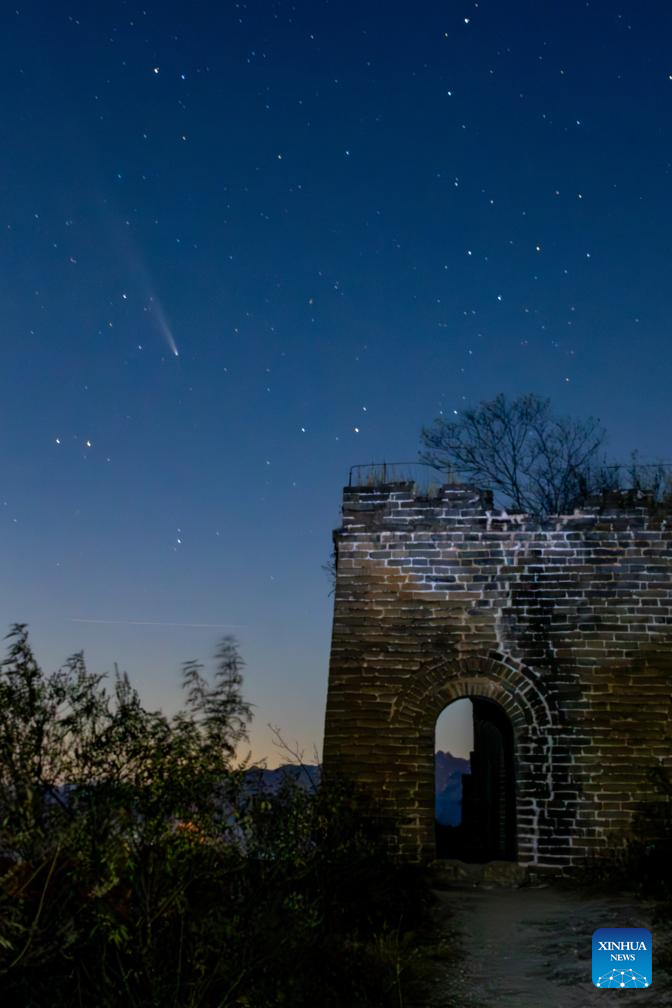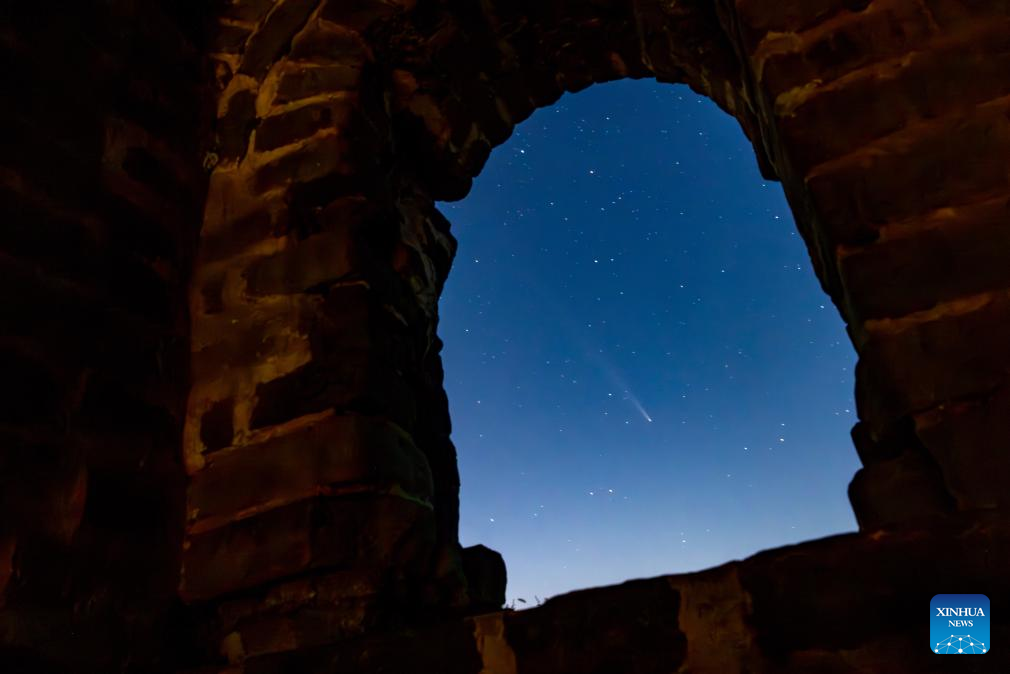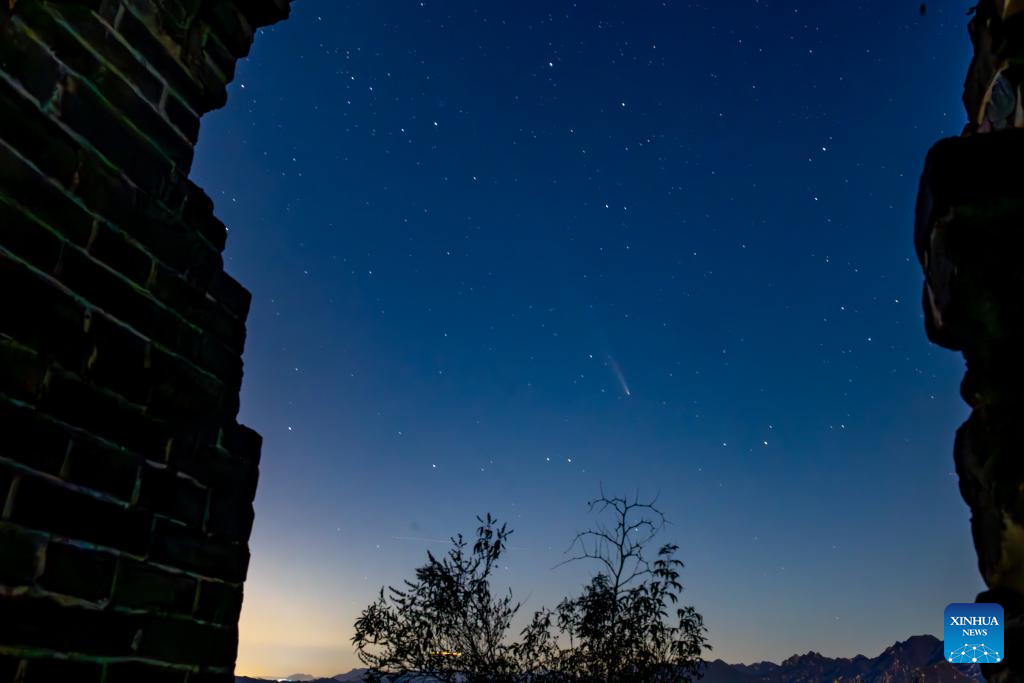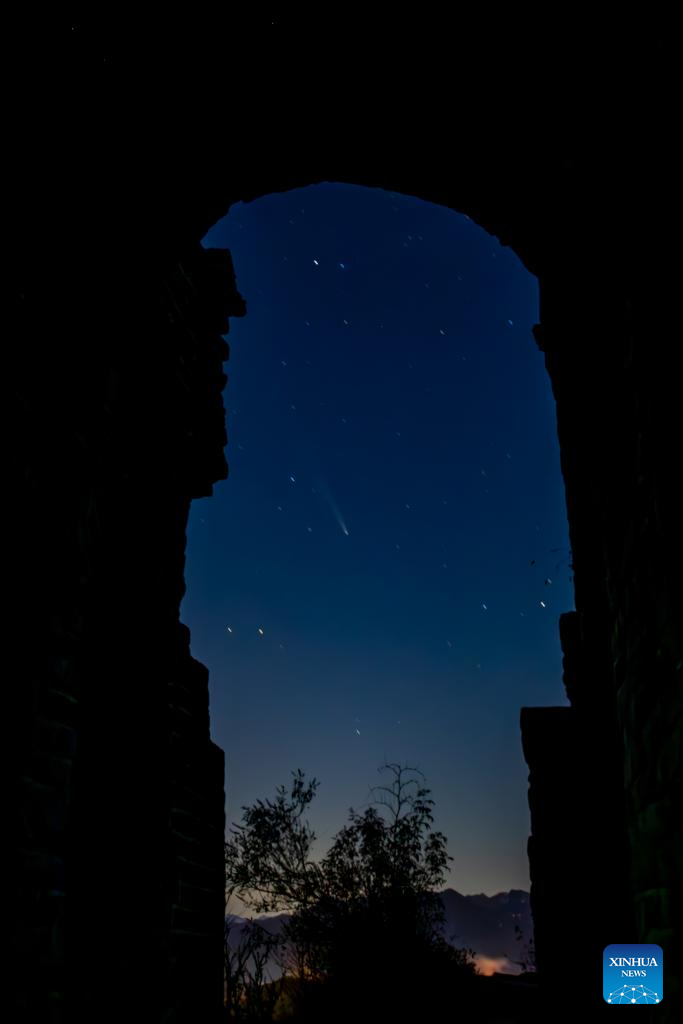
The comet C/2023 A3 (Tsuchinshan-ATLAS) is seen in the sky above the Panlongshan section of the Great Wall in Beijing, capital of China, Oct. 19, 2024.
The comet was first spotted on Jan. 9, 2023 by astronomers at the Purple Mountain Observatory of the Chinese Academy of Sciences. The discovery was confirmed by the International Astronomical Union's Minor Planet Center and was named Tsuchinshan-ATLAS. The commet circles the sun on a special oval orbit, and it would take another 61,751 years before human on earth see it again with naked eyes. (Xinhua/Ou Dongqu)

The comet C/2023 A3 (Tsuchinshan-ATLAS) is seen in the sky above the Panlongshan section of the Great Wall in Beijing, capital of China, Oct. 19, 2024.
The comet was first spotted on Jan. 9, 2023 by astronomers at the Purple Mountain Observatory of the Chinese Academy of Sciences. The discovery was confirmed by the International Astronomical Union's Minor Planet Center and was named Tsuchinshan-ATLAS. The commet circles the sun on a special oval orbit, and it would take another 61,751 years before human on earth see it again with naked eyes. (Xinhua/Ou Dongqu)

The comet C/2023 A3 (Tsuchinshan-ATLAS) is seen in the sky above the Panlongshan section of the Great Wall in Beijing, capital of China, Oct. 19, 2024.
The comet was first spotted on Jan. 9, 2023 by astronomers at the Purple Mountain Observatory of the Chinese Academy of Sciences. The discovery was confirmed by the International Astronomical Union's Minor Planet Center and was named Tsuchinshan-ATLAS. The commet circles the sun on a special oval orbit, and it would take another 61,751 years before human on earth see it again with naked eyes. (Xinhua/Ou Dongqu)

The comet C/2023 A3 (Tsuchinshan-ATLAS) is seen in the sky above the Panlongshan section of the Great Wall in Beijing, capital of China, Oct. 19, 2024.
The comet was first spotted on Jan. 9, 2023 by astronomers at the Purple Mountain Observatory of the Chinese Academy of Sciences. The discovery was confirmed by the International Astronomical Union's Minor Planet Center and was named Tsuchinshan-ATLAS. The commet circles the sun on a special oval orbit, and it would take another 61,751 years before human on earth see it again with naked eyes. (Xinhua/Ou Dongqu)

The comet C/2023 A3 (Tsuchinshan-ATLAS) is seen in the sky above the Panlongshan section of the Great Wall in Beijing, capital of China, Oct. 19, 2024.
The comet was first spotted on Jan. 9, 2023 by astronomers at the Purple Mountain Observatory of the Chinese Academy of Sciences. The discovery was confirmed by the International Astronomical Union's Minor Planet Center and was named Tsuchinshan-ATLAS. The commet circles the sun on a special oval orbit, and it would take another 61,751 years before human on earth see it again with naked eyes. (Xinhua/Ou Dongqu)

The comet C/2023 A3 (Tsuchinshan-ATLAS) is seen in the sky above the Panlongshan section of the Great Wall in Beijing, capital of China, Oct. 19, 2024.
The comet was first spotted on Jan. 9, 2023 by astronomers at the Purple Mountain Observatory of the Chinese Academy of Sciences. The discovery was confirmed by the International Astronomical Union's Minor Planet Center and was named Tsuchinshan-ATLAS. The commet circles the sun on a special oval orbit, and it would take another 61,751 years before human on earth see it again with naked eyes. (Xinhua/Ou Dongqu)

The comet C/2023 A3 (Tsuchinshan-ATLAS) is seen in the sky above the Panlongshan section of the Great Wall in Beijing, capital of China, Oct. 19, 2024.
The comet was first spotted on Jan. 9, 2023 by astronomers at the Purple Mountain Observatory of the Chinese Academy of Sciences. The discovery was confirmed by the International Astronomical Union's Minor Planet Center and was named Tsuchinshan-ATLAS. The commet circles the sun on a special oval orbit, and it would take another 61,751 years before human on earth see it again with naked eyes. (Xinhua/Ou Dongqu)





